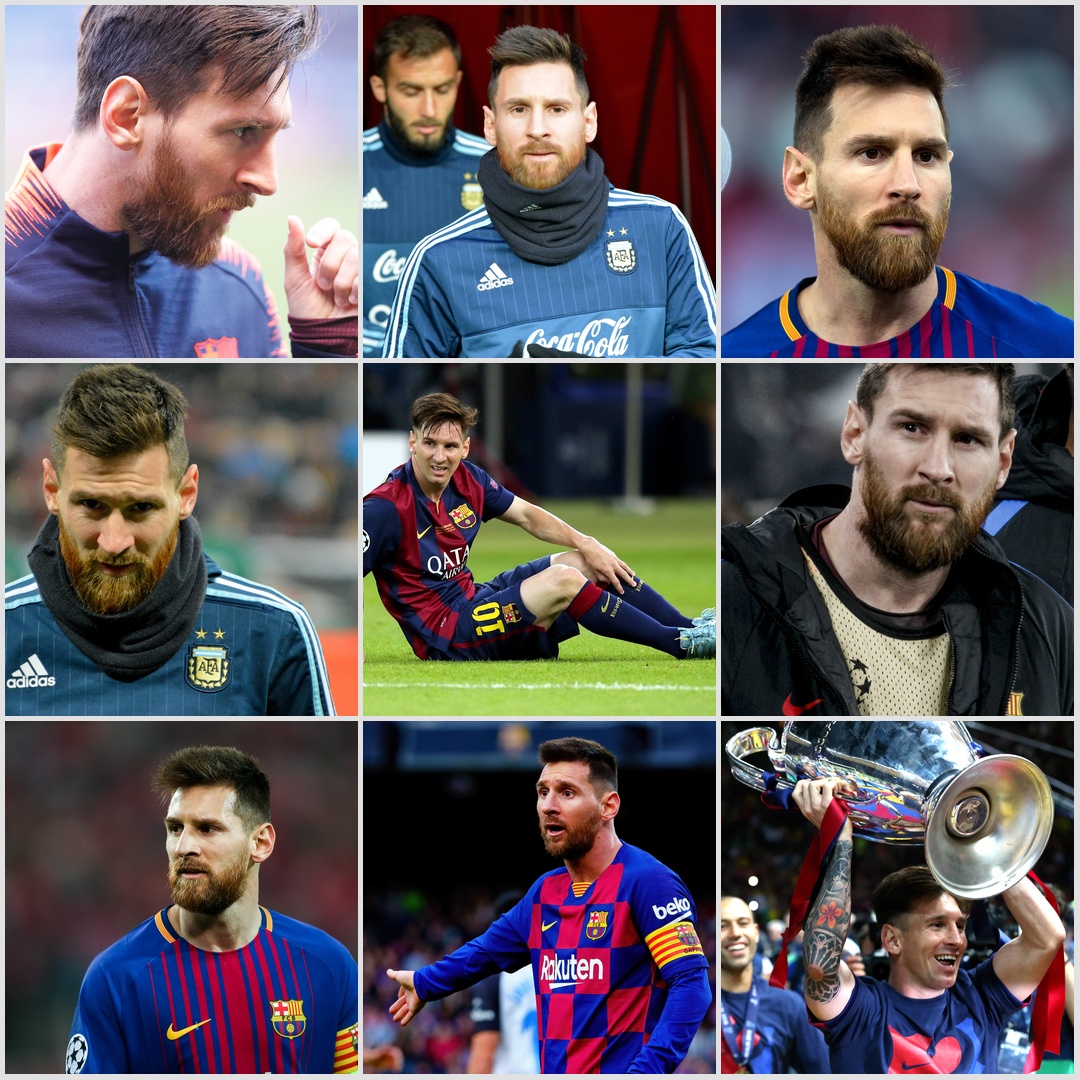
The first images of Lionel Messi in Barcelona colors show a teenager with hair that floated when he ran, a headband keeping the strands in place as he darted through defenders. It looked uncoached, like his dribbling, and it suited a player who was still growing into his body and his aura. Photo archives and early timelines capture that long, feathery phase that fans now romanticize.
As the seasons stacked up, the edges came in. The mullet‑ish shape softened, the length shortened, and the silhouette turned neater. That early‑twenties Messi began to wear a cut that matched the shift from prodigy to pillar, the look of a player who had responsibilities and the certainty to carry them. The transition reads clearly in year‑over‑year photos, a visual cue for a new level of seriousness.


The summer of 2014 brought a sharper turn. After the World Cup in Brazil, he arrived with a severe clean‑up, sides shaved close and a puff of height through the top. It read like a reset after a draining run and it stood out next to the shag of his early years.
From there, the default Messi began to crystallize. The beard stayed. The sides were kept tidy. The top carried just enough length to move. It was a practical choice for a player whose game lived in milliseconds and angles, and it photographed well.
The platinum summer and the years it shaped
Then came 2016 and the peroxide jolt. “I introduced this change to start from zero,” he told Argentina’s Radio Metro that summer. The straightforward line fit a turbulent stretch and the look quickly became a timestamp in his career. The beard and the fade stayed, only the color shifted, which is why that version is still the quickest way to conjure that season.

By December he had returned to his natural color, and the cut settled back into a template he would revisit for years, short at the sides with a controlled lift up top. The familiar palette restored the look fans associated with his prime, even as the beard remained a near constant.
The World Cup 2018 cut refined the formula. Barbers still point to it as a clean reference, a tight clip around the sides and a clean swell of height through the crown. On the field it looked aerodynamic. In a chair it was easy to copy.

Late Barcelona and Paris photographs show small variations on that theme. Sometimes the temples ran tighter, sometimes the fringe carried more texture, and occasionally the beard came off for a spell before returning. Even during the season that earned him a record eighth Ballon d’Or, the mirror stayed within that same lane, a quiet reminder that the biggest changes in his career usually involved trophies, not trims.


When he moved to Miami, the baseline stayed the same but the top sometimes ran longer. In 2025 there were stretches where the hair read slicked back or softly grown out, enough to spark throwback comparisons to his peak Barcelona years. The humid night games and different rhythm may have helped the shape along, and the cameras caught every angle.

Stand far enough back and a pattern appears. The hair maps to turning points without chasing reinvention for its own sake. Long to short, platinum to natural, beard off and on again, then back to the comfort zone. Across two decades, the changes mark fresh starts more than statements, a quiet register of resets before the next act.
